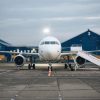 Part of the thriving Asia Pacific, Southeast Asia will remain home to the fastest growing civil rotorcraft fleet in the world this year. Its CAGR is expected to top 21 % and the region will account for 33 % of the global spending on military and 20 % on civil helicopters. Naturally, such a rapid expansion comes with a set of challenges. One of the major ones is related to fleet support, especially in remote areas of the region. Unfortunately, OEMs and independent MRO providers are yet to arrive at a unanimous decision with regard to the most effective solution to the problem.
Part of the thriving Asia Pacific, Southeast Asia will remain home to the fastest growing civil rotorcraft fleet in the world this year. Its CAGR is expected to top 21 % and the region will account for 33 % of the global spending on military and 20 % on civil helicopters. Naturally, such a rapid expansion comes with a set of challenges. One of the major ones is related to fleet support, especially in remote areas of the region. Unfortunately, OEMs and independent MRO providers are yet to arrive at a unanimous decision with regard to the most effective solution to the problem.
In 2014, the civil rotorcraft fleet in Southeast Asia maintained an upward trend as the region experienced an increase of 9% and recorded a total of 2463 helicopters by the end of the year (acc. to Asian Sky Group). The region is made up of a large mainland peninsula and more than 20 000 separate islands, so it comes to no surprise that air travel is the most convenient method of commuting for both locals and visitors. However, it is not the only reason driving the aforementioned fleet growth.
According to different studies, more than a third of the region’s helicopter fleet is used for serving the expanding offshore oil and gas industry in Southeast Asia. For instance, the Asian Sky Group report states that the majority of the Myanmar’s 13 helicopters are used for offshore activities. Moreover, keeping in mind that by 2011 offshore had already accounted for 80 % of oil and gas production in the region and since then has remained on a growing projectile until today (acc. to GEOExPro study), it is clear that comprehensive (and fast-responding) service for helicopter maintenance is a must in the region with so many islands, drilling sites and isolated locations.
“The geographical characteristics of the region, namely its remoteness, are certainly a challenge to overcome. The vast geographic spread of Southeast Asia means that your  fleet can be thousands of kilometres away from one of around only 80 major service stations in the entire region. Naturally, it translates into a whole new set of challenges for both MRO providers and component suppliers,” comments Anatolij Legenzov, the CEO of Helisota. “The main issues that originate from the specific geographic environment include insufficient consumables, long waits and uncoordinated handling of AOG situations. However, despite the fact that all of these problems have been well known for quite a while now, local providers are yet to come up with an effective solution.”
fleet can be thousands of kilometres away from one of around only 80 major service stations in the entire region. Naturally, it translates into a whole new set of challenges for both MRO providers and component suppliers,” comments Anatolij Legenzov, the CEO of Helisota. “The main issues that originate from the specific geographic environment include insufficient consumables, long waits and uncoordinated handling of AOG situations. However, despite the fact that all of these problems have been well known for quite a while now, local providers are yet to come up with an effective solution.”
Instinctively, as a reaction to such growth, manufacturers and MRO providers are trying to meet the ever-growing demand for new rotorcraft by establishing their support centres. However, despite the fact that Airbus Helicopters, AugustaWestland, Bell and many others have set up support facilities in the region’s hub Singapore, many experts note that it has done little good when it comes to tackling the issue of remote areas. In fact, what it unintentionally does is spur the problem of maintenance personnel, which is already a hot topic in the region, as Southeast Asia is also well known for its lack of maintenance professionals. The demand for technicians in the region is expected to reach 30 000 by the year 2033, according to Boeing. This shortage, alongside insufficient and out-of-date maintenance equipment definitely adds to the stack of growth-related issues.
“It is important to understand that the helicopter market growth means value only if it is followed by the appropriate solutions in the areas of maintenance, spare parts supply and the technical training for the scattered region. Considering the environment, such services as deployed teams, components exchange or logistics support can really raise some MRO providers above the rest in the region. And as manufacturers tend to ramp up their presence in central hubs only, operators are left to decide between flexible services of independent MROs and the ones provided by manufacturers. Needless to say, finding a reliable provider offering all of the aforementioned services is on top of every operator’s priority list,” concludes Anatolij Legenzov, the CEO of Helisota.





